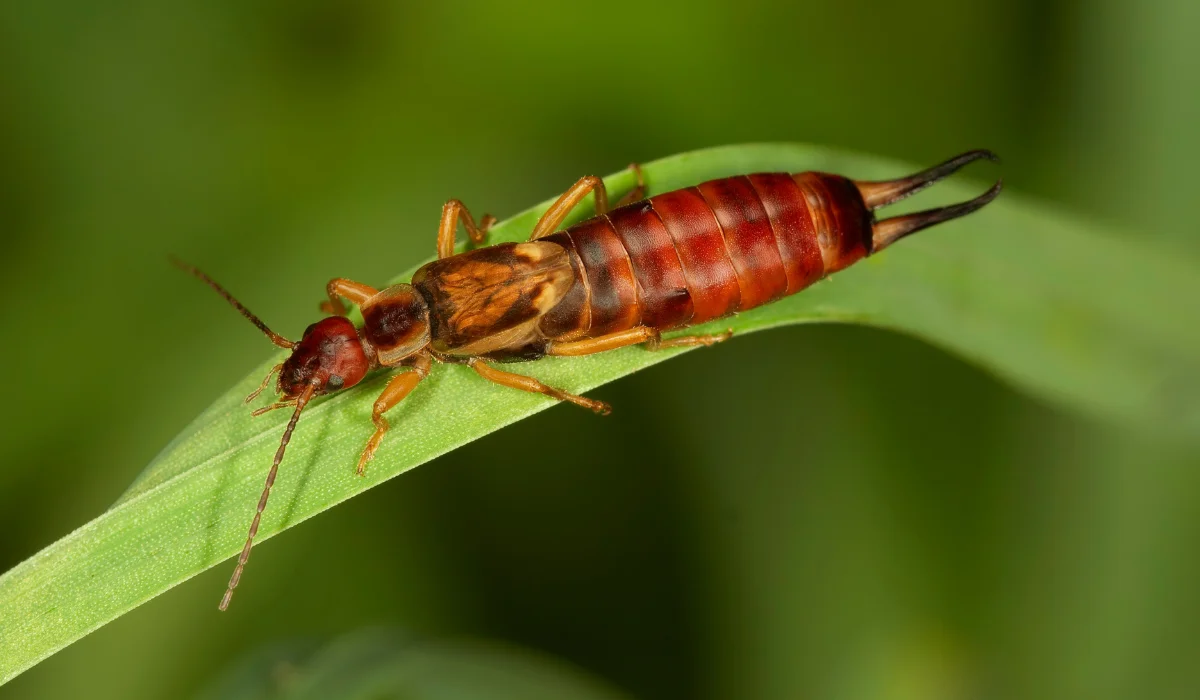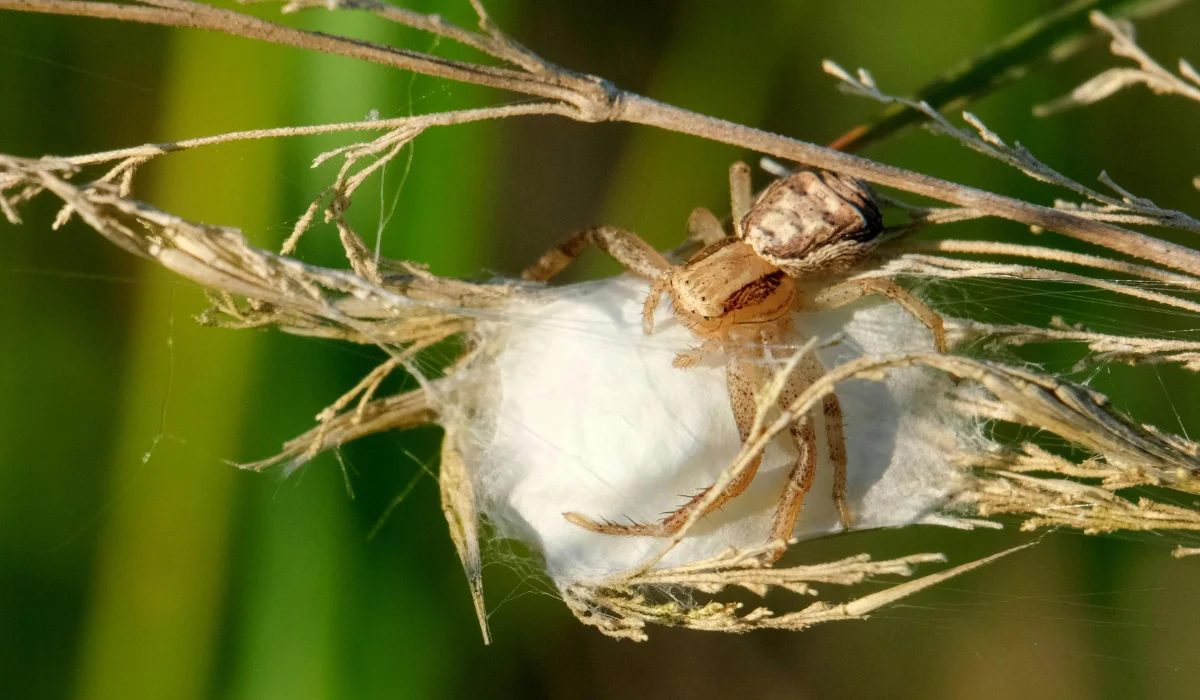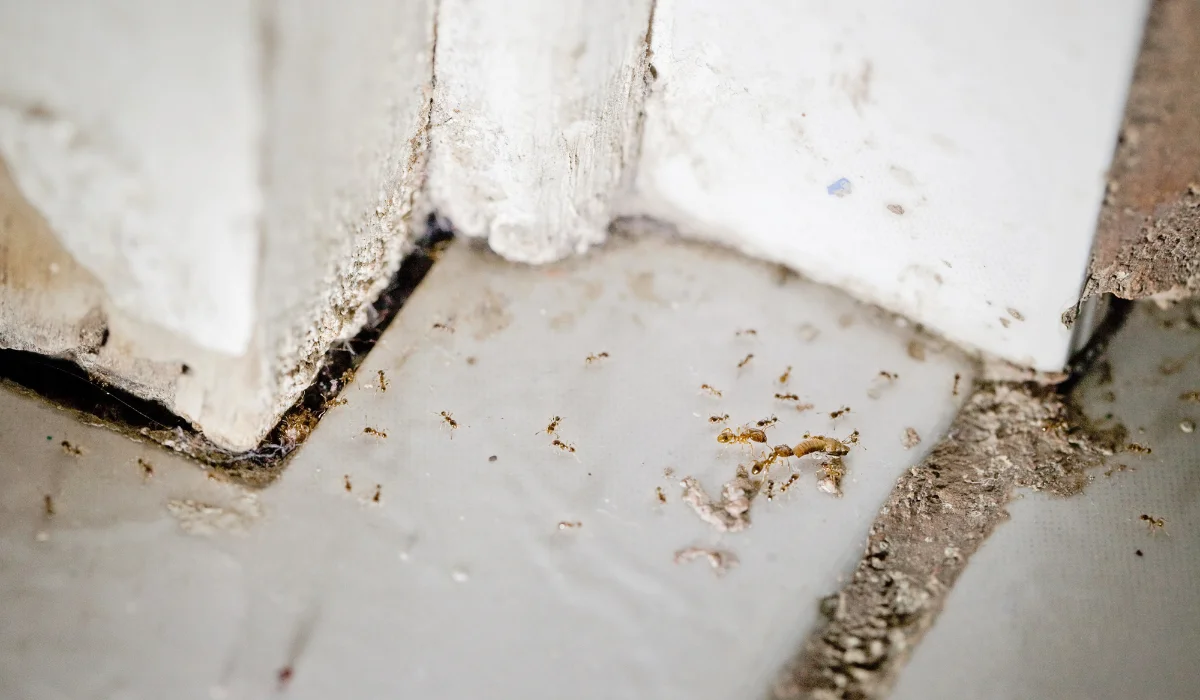Earwigs may look intimidating, but they tend to be more of a nuisance than a danger to homeowners in Louisiana.
Recognizable by their slender bodies and pincers, these insects tend to appear in damp areas such as bathrooms, kitchens, and basements. If you’re seeing earwigs indoors, you’re likely wondering why they’re there and how to get rid of them.
This guide covers everything you need to know about earwigs in Louisiana homes: what they are, what attracts them, and what you can do to prevent an infestation.
Key Takeaways
• Earwigs prefer moist, dark environments and often enter homes through small cracks and crevices.
• They’re mostly harmless to humans but can damage plants and indoor items if populations grow.
• Earwigs use their pincers for defense and mating, not to harm people.
• A pest control professional can eliminate them and prevent them from returning.
What Are Earwigs?
Earwigs are part of the order Dermaptera and are easily recognized by their long antennae and prominent pincers, or forceps, on their abdomen. While some species of earwigs have wings, most Louisiana homeowners never see them fly. Their dark, reddish-brown bodies typically measure around 5/8 inch in length.
The pincers, known as cerci, may look menacing, but they’re mainly used for defense, catching prey, or during mating displays. They’re not dangerous to people or pets.
The Earwig Life Cycle
Earwigs have a simple life cycle that includes egg, nymph, and adult stages. Female earwigs lay eggs in soil or moist organic matter, like mulch beds, and guard them until they hatch. After hatching, the nymphs go through several molts before becoming adults. This process typically takes around two to three months, depending on the conditions.
As omnivores, earwigs feed on a variety of organic materials. Their food sources include plant matter, fungi, dead insects, and small pests like aphids. Indoors, crumbs, pet food, or decaying material can also become a food source, which is why it’s essential to keep these areas clean.
While their presence can be helpful in gardens, indoors, they’re just plain annoying.
Why Earwigs Enter Louisiana Homes
Earwigs are moisture-loving insects. You’ll often find them in mulch, under potted plants, and in damp basements or bathrooms.
You’ll usually spot them indoors after heavy rain, when the soil becomes waterlogged and they seek drier shelter, specifically during pest season, between late spring and early fall, when temperatures and humidity are at their peak. Entry points include gaps in doors, cracked siding, missing weather stripping, and unsealed windows.
Southern Louisiana’s humid climate makes it a natural haven for earwigs. Cities like Baton Rouge, Thibodaux, and New Orleans see increased activity during the warmer months when humidity is high and bugs are breeding.
Where Earwigs Like to Hide
Inside homes, earwigs gravitate to damp, dark hiding places such as:
• Basements
• Bathrooms
• Under sinks
• Laundry rooms
• Behind baseboards
• Inside potted plants
Outdoors, they’re often found in:
• Mulch beds
• Woodpiles
• Flowerpots
• Under stones or bricks
• Between garden decorations
They prefer areas with consistent moisture and shelter. If you’ve got a leaky faucet or dense mulch beds pressed against your home’s foundation, you’re likely to attract them.
Are Earwig Infestations Dangerous?
Earwigs don’t spread disease, and contrary to myth, they don’t crawl into people’s ears. They can, however, be a sign of moisture issues, and in large numbers, they may damage garden plants or indoor houseplants by feeding on leaves and stems.
Their pincers are used for defense and aren’t strong enough to break human skin. While an earwig may try to pinch when handled, it’s more of a surprise than a danger.
Still, no one wants these creepy crawlies hanging around inside.
How to Get Rid of Earwigs
To effectively eliminate earwigs, you must address both the insects and their environment.
Seal Entry Points
Use caulk to seal cracks around doors, windows, and siding. Install or replace weather stripping to close gaps under doors. Make sure screens are intact and vents are covered with mesh.
Reduce Moisture Indoors
Use dehumidifiers in basements and other areas prone to dampness. Fix leaky faucets or pipes, and ensure your home has proper ventilation, especially in bathrooms and kitchens.
Limit Outdoor Hiding Spots
Move mulch and plant matter away from your foundation to prevent damage. Remove piles of leaves, wood, or garden debris. If you use potted plants near entrances, elevate them on stands and inspect the undersides regularly to prevent pests from infesting them.
Target the Earwig Population
Sticky traps placed near known hiding places can reduce the number of insects indoors. Outdoor lighting may attract earwigs, so consider switching to yellow “bug lights” or moving fixtures away from doors and windows.
Call a Professional
If earwigs keep coming back or you’re seeing them in large numbers, it’s time to call in a pest control professional. At LaJaunie’s Pest Control, we use tailored treatment plans to get rid of earwigs and other pests without disrupting your home or yard. Our technicians treat entry points, crevices, and hiding places using safe and effective methods that are tailored to Louisiana’s unique climate.
Natural and Professional Earwig Control Options
If you’re dealing with recurring earwig problems, combining DIY and professional earwig control methods is key. Start by removing their food sources and hiding spots, then use traps or repellents around entry points.
For more stubborn infestations, pest control experts can apply targeted treatments that are safe for your family and pets.
Do Earwigs Bite?
No, earwigs do not bite. Their pincers might look like a threat, but they’re not strong enough to pierce skin. Most people never even get pinched unless they pick one up. If they do, it’s more surprising than painful.
Preventing Future Infestations
Preventing future earwig problems is all about managing moisture and eliminating hiding places for them.
Here are a few tips:
• Install gutter extensions to direct water away from your home’s foundation.
• Avoid overwatering plants.
• Store firewood and lumber off the ground and away from the house.
• Keep mulch beds thin and aerated to discourage nesting.
If you’re already keeping termites, cockroaches, fleas, and bed bugs out of your home, don’t forget about earwigs. These pests may not be the worst invaders, but they don’t belong indoors either.
Serving Louisiana Homeowners
At LaJaunie’s Pest Control, we know how pests behave in our region, from Thibodaux and Houma to Baton Rouge and Slidell.
Just give us a call and we will be there. Our same-day service, transparent communication, and retreat guarantees are why so many families trust us to keep their homes pest-free.
FAQs
Do earwigs bite humans or pets?
No, earwigs do not bite. While they have pincers (cerci), they are harmless and generally used for defense or mating displays. They do not transmit disease or cause harm to pets.
What attracts earwigs to my house?
Earwigs are attracted to moisture and dark, hidden places. Leaky pipes, damp basements, heavy mulch near foundations, and overwatered plants can all create ideal conditions for them.
How can I prevent earwig infestations?
Seal up cracks and crevices with caulk, reduce moisture indoors using dehumidifiers, and keep mulch and plant matter away from your home’s foundation. Professional pest control services can offer long-term protection.
 By: LaJaunie's Pest Control
By: LaJaunie's Pest Control 



